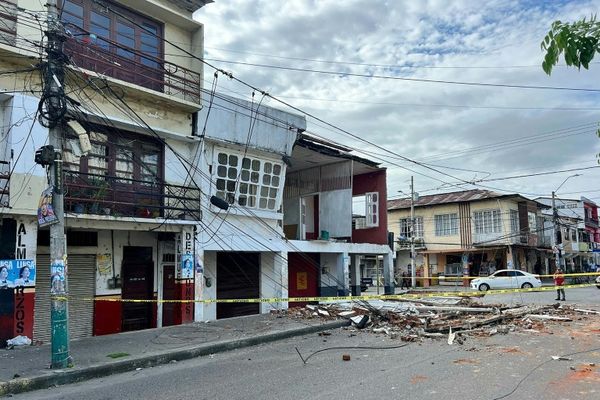A Tasmanian observatory will be able to track fast-moving satellites and help prevent space junk collisions with "catastrophic consequences" after a new mount was donated by a technology company.
The equatorial mount, which tracks in alignment with the rotation of the earth, allows researchers to rotate a 70kg telescope at 20 degrees a second to watch objects in lower orbit.
The Greenhill observatory at Bisdee Tier, near Hobart, forms part of the Southern Guardian Network, an array of infrastructure across Australia owned and operated by the University of Tasmania with electronics company HENSOLDT Australia, which tracks space debris and satellites.
UTAS and HENSOLDT research associate Patrick Yates-Jones said there were thousands of satellites and hundreds of thousands of "general objects" orbiting the planet, and it was critical to avoid collisions.
"We're up to about 6,000 active satellites in orbit now ... and then we're also tracking over 400,000 general objects, whether that's debris or discarded rocket bodies or things like that," he said.
"One potential outcome is that we have a cascading effect, where one collision produces a cloud of debris that collides with other objects, and we end up with a debris cloud that is blanketing the earth.
"It's only going to get more important as our rate of launch ... accelerates as launch vehicles become cheaper to get a spot on."
Mr Yates-Jones said Tasmania's location made it the perfect location to track satellites and prevent collisions.
"Most satellites are launched into polar orbit, which means that they pass over the north and south pole," he said.
"Purely because of that, the further north or south you are, the closer you're going to be to where the satellites pass once every orbit, which means you'll have more chance to see them.
"At our latitude, we can see quite a large percentage."
Tracking satellites 'critical' for Defence
The information gathered by the observatory and the broader network can then be given to the government, the Australian Space Agency, or sold to companies launching satellites.
Managing director of HENSOLDT Australia Scott Reeman said the ability to determine where objects were in orbit was also particularly useful for Defence.
"Defence have a critical need to understand the positioning of everything in space," he said.
"That's for satellites that may be launched, it's for the ability for Defence to conduct their operations. It's also around defence communications, for instance, and understanding where their critical satellite infrastructure that they use ... for military satellite comms actually is, and any threats to those.
Minister for Science and Technology Madeleine Ogilvie said HENSOLDT's donation of the mount "builds on our $900,000 investment into initiatives aimed at strengthening Tasmania's space research infrastructure".
"The new mount will strengthen UTAS's continent-wide array of telescopes that represent an infrastructure investment of more than $100 million," she said in a statement.







